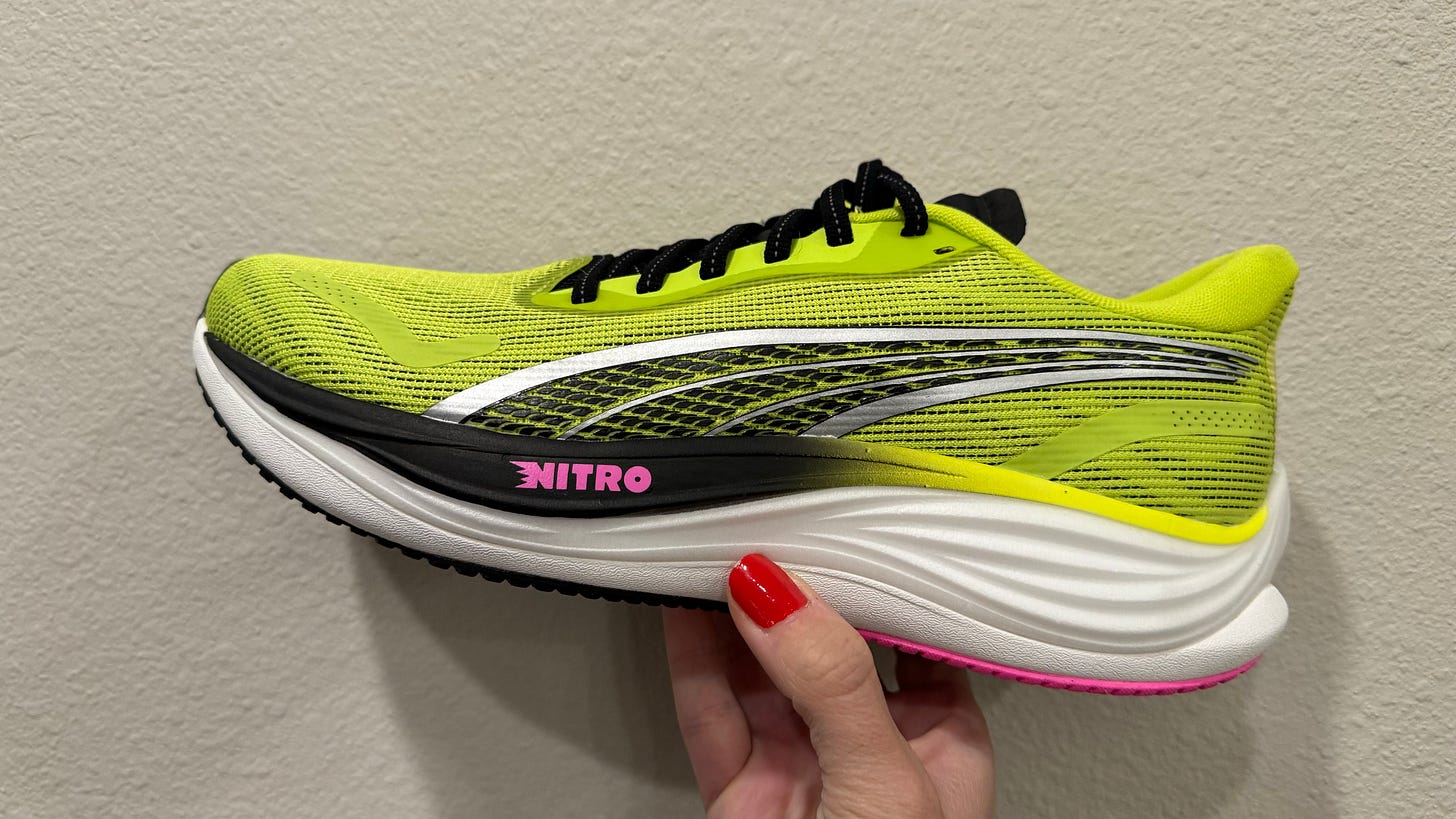How We Talk When We Talk About Running
The language we use to describe our own running journey can have a bigger effect than we might think.
Almost exactly four years ago, I ran the LA Marathon—and it did not go at all the way that I wanted. I posted a recap on Instagram (did you even run a race if you don’t recap it on social media?) acknowledging how frustrated I was that I didn’t hit my finish time, even though I still ran under four hours. In the comments, several people congratulated me and let me know that they’d “kill” to run that pace. The kindness and the perspective that some commenters shared made me start thinking about how I talked about running.
Shortly after that race, I wrote about why I stopped sharing my pace on social media. And since then, I’ve really tried to be more thoughtful about the language I use around running on social media—I could tell that I was being negatively affected by certain things other people posted, and I didn’t want people to feel that way from my posts.
The way we talk to ourselves can have a powerful effect—on our performance, and our mental health. Positive self-talk was the greatest predictor of success (compared to instructional, motivational, and negative self-talk), an older review published in the Journal of Sport and Exercise Psychology determined. From sports perspective, motivational self-talk was shown to boost athletic endurance in an older meta-analysis published in the journal Perspectives on Psychological Science, and talking to yourself with compassion boosts energy and lowers heart rate and sweat response, a study in the journal Clinical Psychological Science found.
On the flip side, being self-critical activates your body’s threat system; it literally puts your body in “fight or flight” mode. And excessive rumination—when someone focuses on negative content, past or present, is linked to an increased risk of mental health problems, including depression, anxiety, and OCD, according to a 2023 study in the journal Brain Sciences. Plus, negative self-talk could be an indication of poor mental health, another 2023 study published in the journal Psychology of Sport and Exercise revealed.
How we talk to ourselves matters, but how we talk about ourselves around others is just as important. Social media acts as an amplifier—whether you have 100 or 100,000 followers, you have no idea who your messages might reach. So when social media is used in a self-critical way, it can have a ripple effect within that community.
Fitness is contagious: After analyzing five years of daily running patterns of more than one million people who logged their runs digitally in a global social network of runners, researchers found that on the same day, on average, an additional kilometer run by friends can inspire someone to run an additional three-tenths of a kilometer and an additional ten minutes run by friends can inspire someone to run three minutes longer. If just seeing your friends run further or longer can motivate you to move, what kind of psychological effect might the language used on those platforms have on you?
Of course it’s fine to feel disappointed in your performance in a workout or a race. But I’ve started to question the benefit of processing those emotions on social media in real time. Case in point: Saying something simple like “I ran a bad time” while posting a finish that’s an hour (or more) faster than the average marathon finish time, or “I ran so slow today” when your Strava shows an average 8:00 mile pace sends a tricky message—what makes that time bad or slow? It’s that kind of language that perpetuates this idea that there’s a certain threshold to meet to be “good” at this sport (ahem, the Boston Marathon). The larger your platform, the more effect this kind of language can have.
Obviously, you’re not responsible for how other people feel when they read your social media post. But we’re all here because we love the running community, right? And wouldn’t taking a beat to reflect on what you’re posting and why you’re posting it better benefit the community?
This whole topic reminded me of a chapter in Brad Stulberg’s latest book, Master of Change, that discussed reactive versus responding:
“When we react, we panic and pummel ahead; when we respond, we pause, process, plan, and only then proceed. Reacting is quick, responding is slower. It involves more space between an event and what you do, or don’t do, about it. In that space, a pause, you give immediate emotions room to breathe and thus you come to better understand what is happening—that is, you process. … Responding is harder than reacting, especially at first. It requires more psychic energy; it demands letting an urge to immediately do something, anything, be there without giving in.”
“Nearly everything about social media teaches us to react instead of respond,” Stulberg continues. Think about that uneasy dread you might feel after scrolling the news on Twitter before bed—that kind of doom scrolling is detrimental to mental health, and can cause feelings of apprehension, anxiety, sadness and anger, and uncertainty about the future, according to a 2021 study in Perspectives in Psychiatric Care.
The people most likely to doom scroll are those with a high level of neuroticism—one of the Big 5 personality traits, typically defined as a tendency toward anxiety, depression, self-doubt, and other negative feelings—a 2022 study from the journal Applied Research in Quality of Life determined. I feel like most runners will cop to a certain level of neuroticism…
Consuming negative breaking news headlines is not really that different from constantly scrolling through other people’s negative self-talk. “If you are swimming in a sea of reactivity, then it is inevitable that you will become a reactionary kind of person,” Stulberg wrote. Translation: The more negativity you consume, the more likely you are to be critical of yourself.
When I write in my journal (yes, I still have a handwritten journal), there’s no filter. Honestly, that stream-of-consciousness can be a scary place, because it’s where I try to process my feelings in real time. You know where I don’t do that? Social media—because those platforms are a public forum, and a) I don’t want to scare other people or b) I don’t want to sway anyone else into thinking that the way I feel about my running journey is how they should feel about theirs.
Everyone should feel empowered to show up the way they want to on whatever platform. But I think it’s important to consider who’s consuming your content, and whether what you’re putting out there will have an overall net positive or negative effect on that audience. Everyone benefits when we all take a beat before sharing the way we feel with the world.
the rundown
PUMA Velocity NITRO 3
Since watching Puma Elite athletes Fiona O’Keeffe and Dakotah Lindwurm storm onto Team USA at the Olympic Trials, I’ve been dying to know more about the Deviate Elite 3. I don’t have details on that one yet, but I can say I’ve been really enjoying running in the Velocity NITRO 3. Puma’s NITRO foam is injected with nitrogen to increase its spring and bounce (we’re seeing this kind of tech in a lot of everyday training shoes this year), and you can feel the comfort and responsiveness with each step. PUMA also excels at traction, and these handled speed in slushy conditions really well.
Ice Baths Impair Gains
I know there’s a whole “bro science” corner of the internet that evangelizes the benefits of ice baths, but if you’re looking to make strength gains, you should not immerse yourself in frigid water post-workout, a scientific review published in June 2023 in SportRχiv determined. Exercise causes microscopic damage to your muscles, which leads to inflammation—in repairing and addressing that stress, your body adapts and becomes stronger. But the cold water blunts that response, preventing your body from adapting. Ice baths should be reserved for long enough after a workout that your goal is mental toughness, not physical adaptation, or when recovery is the number one goal, like after a race.
‘TRACK: All-Access’ YouTube Channel Launches
If you’ve ever wanted to watch elite runners train, subscribe to the new running YouTube channel ‘TRACK: All-Access’. It was started by Gordon Mack, who worked at FloTrack and MileSplit but wanted to see more behind-the scenes content from athletes. Fans can watch every rep from sessions like Conner Mantz and Clayton Young’s pre-Olympic Marathon Trials workout, or NCAA champions Graham Blanks and Maia Ramsden threshold workout. TBH, I’m not really one to watch other people work out, but I fully support any new running platform that gives fans more access to the sport.





That was a fun read. A great reminder that our words always mattter :)